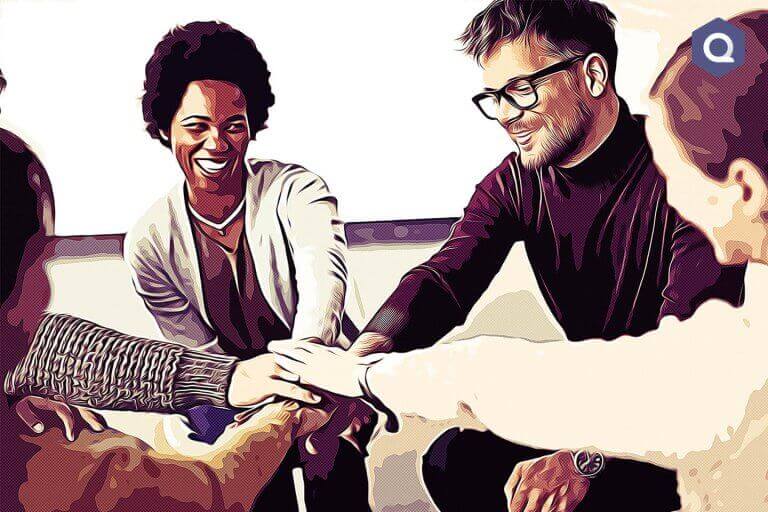Intergenerational trauma or intergenerational wisdom? Parents’ unhealthy habits get passed down in endless cycles but so does their inner wisdom, even if it’s hidden away. As a mental health professional, you can help people unlock that wisdom through family therapy activities.
On the surface, family therapy activities are designed to improve communication, reduce conflict and build connections. Therapists go much deeper than this by uncovering patterns, biases, assumptions, narratives, values and everything else that makes us human.
The beauty of family therapy activities is that they bring family units together within their social and cultural contexts to explore behavior. Add to that some results-based accountability and mental health professionals can truly make a difference to both the younger and the older generations.
With digital tools now at our disposal, such interventions can be even more creative and most importantly, exercises can be done at any time and from anywhere. Our specialist’s thoughts on accountability apps are covered extensively in The Ultimate Guide to Accountability Apps.
We’ll walk you through some of the best family therapy activities from renowned psychiatrists who have witnessed their effectiveness. We’ll also show you how a platform like Quenza offers you another level of client engagement. With Quenza, you have access to hundreds of evidence-based exercises, visualizations and worksheets to complement your family therapy activities. We’ll show you how in this article but why not sign up for the free, full-access, one-month trial and see for yourself?
The Fundamentals of Family Therapy
Family therapy evolved from Freud’s concept of the autonomous self to the relational self with Adler and others. The structural, or orderliness, model first came out in the 1960s and also evolved through to symbolic interactionism which paved the way for systems and communications theory. In symbolic interactionism, each of us has both an inner and outer self but systems theory expanded this idea into having both an “I” and a “we” [1].
Today we have the third generation of family therapy with evidence-based systemic approaches rather than purely following theoretical models to analyze the psyche. Family therapist Charles Fishman takes this one step further by challenging the industry that not enough documentation has taken place within family therapy.
As such, it seems that many healthcare professionals previously over-relied on models without taking the family system into consideration. Within systems thinking, Fishman also encourages the use of goal-setting or results-based accountability. Not only can family therapists lead the way with evidence-based outcomes but also bring family therapy to the forefront of mental healthcare [2].
Implementation Intentions

Now let’s consider how family therapy works. First, it’s important to take into account how the family unit has changed from the traditional nuclear model with two parents of different genders. Moreover, roles have changed within families.
Family therapy aims to uncover all those roles and how they intentionally, or unintentionally, reinforce the current family interactions. The added complexity is that behavioral and emotional problems are often passed through the generations. Again, family therapists work to explore these levels of complexity.
Like any system, the family unit is more than just individuals brought together. They have processes, feedback loops, rituals and so much more that bring them together like an orchestra. Together with their therapist, families seek to understand what this means to them. From there, they can put together strategies to optimize how they function together. It’s almost like creating policies and procedures for teams in an organization [1].
In summary, the reason why family therapy is important relates to creating healthy and functioning units. Healthy families interact more positively with each other but also with the wider community so better serving society as a whole.
What are the benefits of family therapy activities?
Another one of the core reasons why family therapy is important is that it empowers such units to manage change and stress. More specifically, they learn and form healthy identities, boundaries and relationships within the unit [1].
In short, what are the benefits of family therapy if not gaining a greater sense of well-being to then operate more optimally in everyday life?
For example, some family therapy activities focus the family on dealing with loss whether through death or an event such as children starting school. Other activities give families the resilience and emotional regulation to deal with crises such as conflict, separation, redundancy, illness and more.
Some family therapy activities focus specifically on communication and how their patterns form into feedback loops with cause and effect. Nonverbal communication is also often explored through games and activities.
One example of a nonverbal communication game is where family members express various emotions using their faces and bodies. Therapists can get creative and use cards, posters or digital images. It can essentially become a type of role-playing game which is particularly engaging for families with younger members.
Knowing Your Emotions
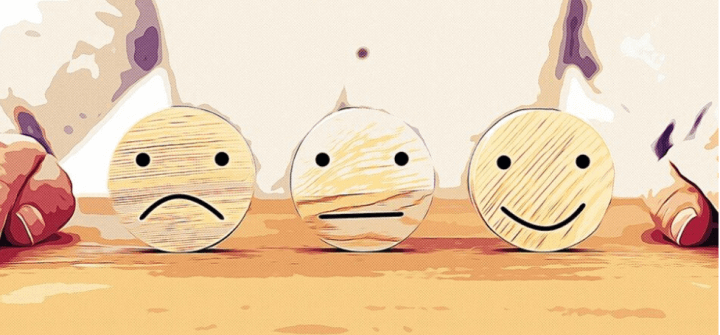
Most importantly, family therapy activities enable families to learn successful problem-solving techniques. Consequently, they become empowered in dealing with life and its challenges.
The Overall Purpose and Goals of Family Therapy
How family therapy works depends on what type of model you follow. The main ones that still come under the systems concept are structural and strategic.
Simply put, a structural family therapist focuses on the rules that impact communication within families, both stated and unstated, so essentially fixing the structure. Conversely, a strategic family therapist focuses more on the symptoms and will guide the family to devise communication strategies to encourage healthier interactions.
Both approaches have similar goals and outcomes. These include family therapy goals such as developing conflict resolution skills, nurturing parent leadership mindsets, practicing effective behavior management, balancing out power and redefining communication [3].
Family therapy activities are experiential and creative ways to meet those goals. They do this by opening up communication channels with the therapist as the guide and facilitator. Some exercises even involve some form of art creation, not too dissimilar from art therapy for teens, to allow for new brain connections.
Motivational Vision Board
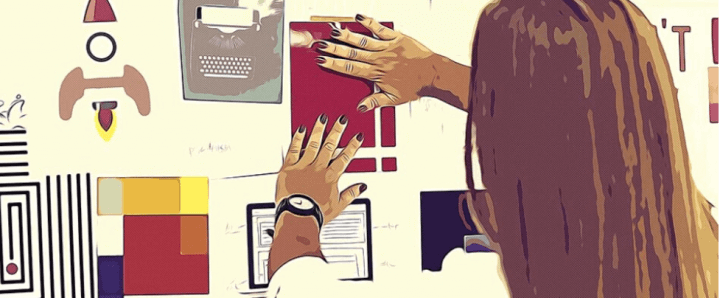
Naturally, it’s particularly important for the therapist to be aware of their own family influences to ensure they remain an impartial guide during all family therapy activities. The aim is to be fully present and empathetic so as to create a safe space. As such, they can create the right conditions for deeper connections to take place within the family over time.
The Nitty Gritty of Family Therapy Activities
Family therapy activity ideas are creative ways for members to open up and connect. Most critically, they’re engaging for children, especially younger ones.
Some families might be nervous or reluctant to show themselves as vulnerable or even flawed in front of their children. Family therapy activities aim to remove those inhibitions.
Children also give a viewpoint and honesty that most of us as adults have forgotten. In many ways, we have so much to learn from them. If nothing else, the concept of play is something that many adults no longer take part in. Again, family therapy activities aim to restore a level of playfulness that we all need for greater well-being.
Therapeutic family activities also shift the balance between logic and emotions. Adults tend to operate more at the logical end of the scale while children bring in raw emotions. A skilful therapist can guide families to adopt the benefits of both [4].
Other family therapy topics that such activities cover could be, for example, rituals. These are a major part of every family’s life whether they are aware of them or not. How families celebrate birthdays, anniversaries or even how they organize breakfast and start or end their day all have ritualistic elements.
Family therapists can work with existing rituals or guide families to create new ones to deepen their bonds. With the right rituals, families also gain a supportive framework that boosts their individual and group resilience.
Creating Rituals Around Loss
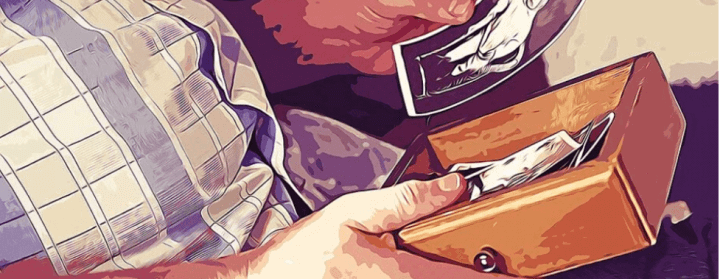
Best Family Therapy Activity Ideas
All family therapy activities are effective for different reasons. Your list of the best ones won’t necessarily be the same as someone else’s because it depends on context and experience. Nevertheless, these ones have been successfully applied over the decades.
1- Family Orchestra
(adapted from psychiatrists Ken Gardner and Lorri Yasenik whose activity is detailed in the booklet Favorite Therapeutic Activities for Children, Adolescents and Families: Practitioners Share Their Most Effective Interventions. Edited by Liana Lowenstein, MSW)[5]
Just like an orchestra needs practice to be in harmony, a family does too. One way to make this visual and nonverbal is to encourage each family member to make a sound with their body and whatever tools are at their disposal. Tapping shoes, clicking fingers, banging the wall and so on all count.
The most interesting part is when the family takes turns being the conductor and finding nonverbal ways to set the tempo and loudness. This gives the family an opportunity to explore roles, power struggles and how in harmony, or not, they can be.
Using Music to Express Feelings
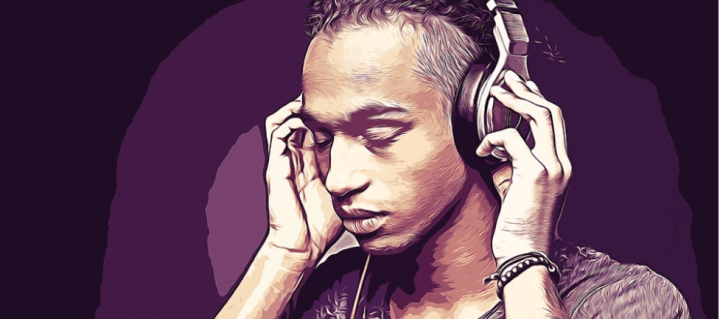
2- Build Relationships with Colored Candy Go Around
Devised by therapist Katherine Arkell, the aim behind this activity is to open up communication. This can be done with colored candy or balls or even stickers. The point of candy is that there’s something fun to eat afterwards [6].
Everyone gets a handful of colored candy or stickers where each color has a question attached to it. The family members then take it in turn to answer the question according to the sequence of colors they pick. For example, blue can represent how the family plays together. Orange can be family strengths but red is family weaknesses or worries.
The Wheel of Life
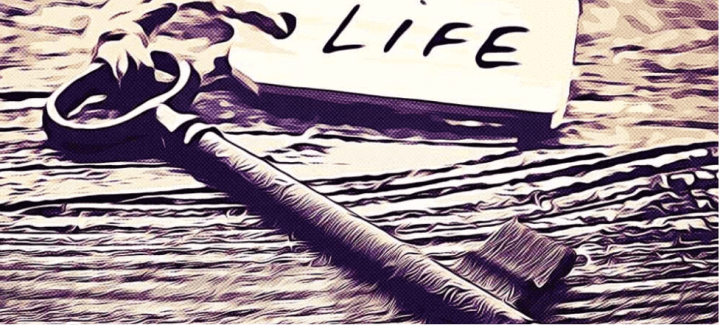
3- Emotions Ball Game
The best family therapy activities are often physical or artistic because they allow everyone to think and interact differently. This one also enables family members to connect with their emotions and to start developing a common language. Moreover, this game can help a therapist see if there are any major mental health issues such as depression or anxiety.
For this game, therapists buy a reasonably priced football or beach ball of whatever size they feel is appropriate. They then write on it all the possible “emotion” words that might be relevant for the family.
In the session, the family throws the ball to each other and each time they catch it, they talk about the first emotion they see written down on the ball. Depending on the situation, the therapist might ask them when they last experienced that emotion or even to mime it with the body. This helps clients connect with emotions in the body while disconnecting from the mental stories they attach to emotions [7].
4- Mirroring
A fun activity that often brings out laughter is where family members copy exactly each other’s movements and expressions. This game increases empathy and allows adults to experience a child’s world more closely.
Moreover, the therapist can guide the family to connect with whatever emotions come up. Consequently, they enhance further open dialogue and emotional wisdom.
Restoring the Broken Mirror Metaphor
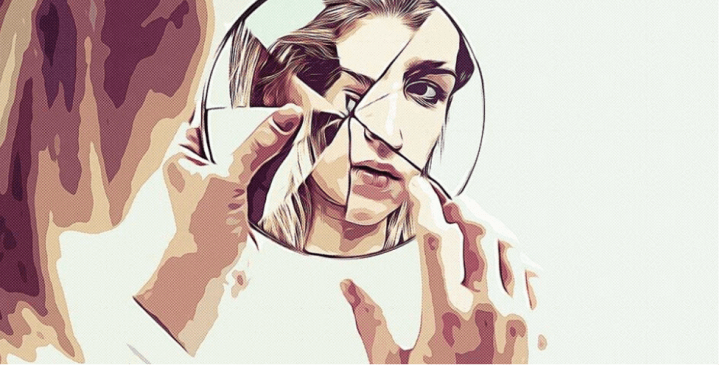
5- Lily Pad Swamp Crossing
This interactive game promotes problem solving and collaboration. The aim is to get the whole family, who are now frogs, across a swamp with only one lily pad. The therapist can also observe how the family plans and listens to each other as they play the game [8].
Best Family Therapy Exercises
Of course, activities and exercises don’t replace therapy and therapists do much more than facilitate family therapy activities. Nevertheless, those activities can surface issues and allow family members to get to know each other in a whole new light. The mind is then liberated and more ready for change.
1- My Family Portrait
Therapeutic family activities often overlap with art therapy as in this exercise. For this one, the therapist cuts a large piece of drawing paper into puzzle pieces, one for each family member. Each member then takes a puzzle piece and draws another family member before they are all reconnected.
Family therapists use this activity to open awareness about how each family member is perceived as well as how they all connect back together. The discussion then revolves around what each person is doing and feeling. This allows the family to explore their roles and how this might impact their behavior and potential conflict [9].
A Value-Tattoo
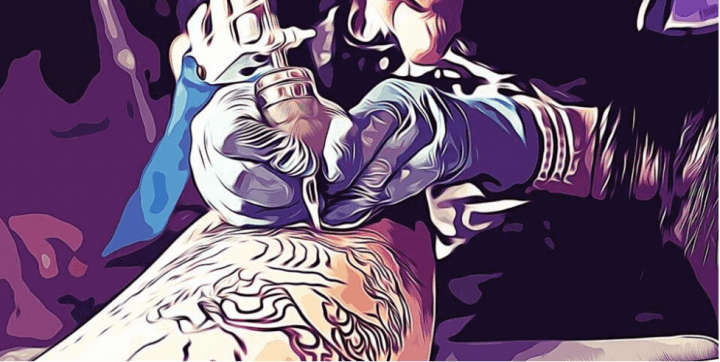
2- Make your Genogram
This exercise usually serves as a good assessment tool for therapists but it can also be referred to during check-ins along the therapy journey. As they show family lineage as well as emotional relationships, things can, and do, shift.
A useful Therapistaid overview and worksheet on creating a genogram is a good starting point. With it, you can make sure you have the symbols and themes you need to guide a family to create their genogram.
Once complete, it’s a beneficial visual chart for family members to start understanding how their family system operates. You can even include this step in session feedback forms such as whether this activity is useful and what they’re learning from it.
Furthermore, the genogram highlights strengths and weaknesses within the family unit. So, unhealthy habits come to light as well as abilities they forgot they had. Seeing the bigger picture helps families be more empathetic towards each other for more effective problem solving.
3- Self Love
Some of the best family therapy exercises involve connecting family members both as individuals with themselves and with the others within the family. Positive Psychology has over 20 exercises and worksheets to increase self love which, in turn, solidifies a positive self-image.
From there, it’s easier for family members to connect with what they need and to then learn how to ask assertively and patiently.
Alternatively, you can apply and customize Quenza’s ready-made exercises. With the wide choice of self love exercises, you can easily make your own set of family therapy activities. A selection of those exercises is shown below. Although, you can see the whole list of all the other self love exercises by signing up for the free, full-access, one-month trial.
Self-Love Sentence Stems

Rating Behavior Rather Than the Self
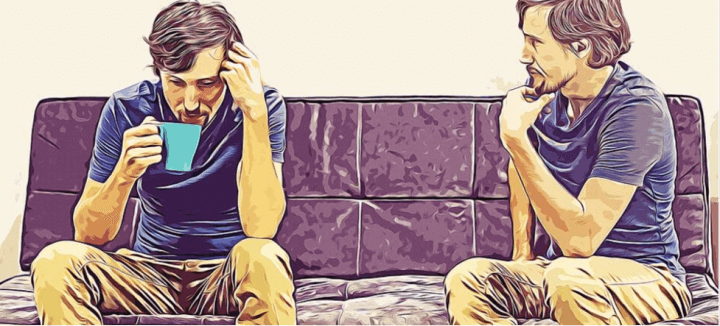
4- What’s My Story?
Family therapy topics range in impact from conflict about who wipes down the kitchen table to physical or emotional abuse. Nothing will ever make abuse acceptable but everyone can learn to change their story and therefore, their mindset.
When children relate traumatic or bad experiences in the form of a story, it can help them create some distance. It can also feel less daunting and can even be told in the third person or drawn or role-played. Depending on the children’s ages, therapists can adapt accordingly.
Rewriting the Narrative with Humor

5- Support system
Every therapist knows that they need to close out the therapy journey at some point. Otherwise, their clients haven’t gained the empowerment and self-efficacy to operate skilfully in life. That’s why goals are an important part of the journey but are family therapy activities that give closure.
Whether a family member discusses, draws or role-plays this final exercise, the idea is for each of them to know who their support system is. Together, they commit to supporting each other according to the needs that are clearly listed as part of the exercise.
Investing in Valued Relationships
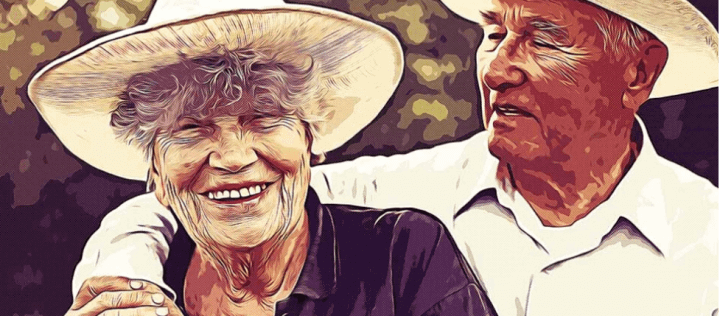
Becoming a Family Therapist or Counselor
So, what are the benefits of family therapy and is this something you want to contribute to? Many therapists are apprehensive about the idea of working with children but don’t let that stop you.
As mentioned earlier, children contribute a new level of playfulness and creativity that even we, as mental health professionals, need to connect to. Moreover, you’ll be allowing families to potentially break the cycles of generations of trauma and abuse.
To work in this field, you need a family counselor certification. Although, the details and format will depend on the regulations in your state or country. A good place to start is by looking up the regulating bodies or major family therapy associations in your area and reviewing their list of accredited courses.
Once you complete your family counselor certification, usually after 1 or 2 years, there’s a period of supervision. There’s no replacement for experience. Moreover, working with the right supervisor is hugely motivating and will set you up on the right path to success.
How Will You Benefit from Family Therapy Activities?
None of us operate alone and forgetting the context of families and culture means that so much potential healing is missed during individual therapy. We are stronger as families, even those with major issues, and by aligning family therapy goals, therapists can guide people towards a more balanced life.
The best family therapy activities combine a host of evidence-based models and theories to create experiential learning that enables family transformation. As such, therapists become skilled facilitators who are spontaneous and adaptable as they too step in briefly into each family system.
A family counselor certification is only the starting point in this fulfilling career where learning works both ways. Your role is also to remain fresh and creative and there’s no better way to do that than by partnering with a software platform like Quenza.
The family therapy activities and exercises you’ve seen in this article don’t do justice to the size of Quenza’s library or how easy it is to customize each one. For those who aren’t admin-focused, Quenza also takes all that away from you with its online client intake and other critical documentation.
Try it out yourself by signing up for the free, full-access, one-month trial and get access to everything Quenza has to offer.
Life is hard and we all need help at times. Reaching out to a family therapist can be a brave starting point to save your family. Simply search for local organizations and ask them about their family therapy activities. Remember that you might also rediscover the fun in life once the suffering has stopped.
Enhancing Communication Through Digital Tools
The integration of digital tools in family therapy has revolutionized the way therapists engage with families. These tools offer a multitude of benefits, from providing convenient access to therapy resources to facilitating continuous engagement beyond the traditional therapy setting. Platforms like Quenza exemplify this evolution by offering a vast library of evidence-based exercises, visualizations, and worksheets that can be customized to meet the specific needs of each family. These digital resources allow families to engage in therapy activities at their own pace and from the comfort of their own homes, which can be particularly beneficial for those who may feel intimidated or constrained by in-person sessions.
Moreover, digital tools support the tracking and monitoring of progress, enabling therapists to gather data on the effectiveness of various interventions. This data-driven approach can enhance the personalization of therapy, ensuring that each family receives the most effective strategies for their unique dynamics. For example, a family working on improving their communication styles can use specific exercises and worksheets provided by Quenza to practice and reinforce these skills between sessions. This continuous engagement helps solidify new habits and behaviors, making them more likely to become permanent aspects of family interaction.
Digital tools also foster greater flexibility in therapy delivery. Therapists can offer asynchronous support, responding to family members’ reflections and questions at different times, which can accommodate varying schedules and reduce the need for frequent in-person visits. This flexibility can make therapy more accessible and less disruptive to daily life, encouraging more families to seek and maintain therapeutic support. Ultimately, the integration of digital tools in family therapy not only enhances the therapeutic process but also empowers families to take an active role in their own healing and development.
The Role of Cultural Competence in Family Therapy
Cultural competence is a crucial aspect of effective family therapy. It involves understanding and respecting the diverse cultural backgrounds of families, which significantly influence their values, communication styles, and overall dynamics. A culturally competent therapist is aware of their own biases and works to ensure they do not negatively impact the therapeutic process. This awareness is essential for creating a safe and inclusive environment where all family members feel understood and respected.
One of the key benefits of cultural competence in family therapy is that it allows therapists to tailor their interventions to align with the cultural values and practices of the family. For instance, certain cultures may place a high value on respect for elders and collective decision-making. A therapist who understands this can incorporate these values into the therapy sessions, making the activities and goals more relevant and acceptable to the family. This approach not only enhances the effectiveness of the therapy but also builds trust and rapport between the therapist and the family.
Additionally, cultural competence helps in addressing intergenerational conflicts that may arise from differing cultural expectations and experiences. For example, immigrant families often face challenges as children adapt to the new culture faster than their parents, leading to conflicts around identity, behavior, and expectations. A culturally competent therapist can navigate these complexities by validating each family member’s experiences and fostering open communication about cultural differences.
Incorporating cultural competence also involves being knowledgeable about the specific challenges faced by minority groups, such as systemic discrimination and socioeconomic disparities. Therapists can then provide more holistic support by connecting families with community resources and advocating for their needs. By integrating cultural competence into family therapy, therapists can better support families in navigating their unique cultural landscapes, ultimately leading to more meaningful and sustainable therapeutic outcomes.
Frequently Asked Questions
The duration of family therapy varies depending on the family’s needs and goals. Typically, it can last anywhere from 3 months to a year or more. Sessions are usually held weekly or bi-weekly, lasting about 60-90 minutes each. As the family progresses, sessions may become less frequent. The therapist will work with the family to determine the appropriate frequency and duration based on their specific situation and progress.
Yes, family therapy can still be beneficial even if not all members participate. While having everyone involved is ideal, therapy can be effective with those who are willing to attend. The participating members can learn new communication skills, gain insights into family dynamics, and make positive changes that can influence the entire family system. However, the therapist may need to adjust their approach and goals to accommodate the absent members’ influence on family dynamics.
Family therapy for blended families or non-traditional structures often focuses on unique challenges such as role definition, boundary setting, and integration of different family cultures. Therapists may use specialized techniques to address issues like step-parenting, co-parenting with ex-partners, or navigating multiple household dynamics. The therapy emphasizes creating a cohesive family unit while respecting individual differences and past experiences. Flexibility and cultural sensitivity are key in these situations.
Homework is a crucial component of family therapy. It allows families to practice new skills, implement strategies, and reflect on their interactions between sessions. Assignments might include communication exercises, journaling, or specific tasks designed to reinforce therapeutic goals. Consistent engagement with homework can significantly accelerate progress and help families integrate new behaviors into their daily lives. The therapist will typically review homework during sessions to gauge progress and adjust treatment plans accordingly.
Family therapy addresses power imbalances by creating a safe space where all voices are heard equally. Therapists use techniques to ensure that less dominant family members have opportunities to express themselves. They may employ role-playing exercises, family sculpting (a technique where family members physically arrange themselves to represent their relationships), or circular questioning to highlight and address power dynamics. The goal is to promote more equitable decision-making processes and mutual respect among all family members, regardless of age or position within the family.
References
- ^ Marley, J. A., Rasheed, J., & Rasheed, M. N. (2011). Family Therapy Models and Techniques. Sage Publications, Inc.
- ^ Fishman, H. C. (2022). Performance-Based Family Therapy: Is anybody better off? Family Therapy Magazine. Retrieved from: https://ftm.aamft.org/performance-based-family-therapy-is-anybody-better-off/.
- ^ McLoughlin, S. (n.d.). Strategic and Structural Family Therapy Model Comparison. Prescott College. Retrieved from: https://www.academia.edu/17619972/Strategic_and_Structural_Family_Therapy_Model_Comparison.
- ^ Lowenstein, L. (2010). Creative Family Therapy Techniques: Play, Art, and Expressive Activities to Engage Children in Family Sessions. Champion Press.
- ^ Lowenstein, L. (2011). Favorite Therapeutic Activities for Children, Adolescents, and Families: Practitioners Share Their Most Effective Interventions. Champion Press. Retrieved from: https://www.lianalowenstein.com/.
- ^ Arkell, K. (n.d.). Colored Candy Go Around. Retrieved from:
https://cls.unc.edu/wp-content/uploads/sites/3019/2019/01/Skittles-Game.pdf. - ^ CFCS (n.d.). Feelings Ball Game. Catholic Family & Child Service. Retrieved from:
https://depts.washington.edu/hcsats/PDF/TF%20CBT/pages/4%20Emotion%20Regulation%20Skills/Client%20Handouts/Affective%20Expression/Feelings%20Ball%20Game%20Instructions.pdf. - ^ Act for Youth (n.c.). Lily Pads. Act for Youth Center for Community Action. Retrieved from: https://www.actforyouth.net/resources/stya/stya-pd16-lilypad.pdf.
- ^ Art Therapy Resources (2022). Using Art Therapy with Families. Art Therapy Resources. Retrieved from: https://arttherapyresources.com.au/art-therapy-families/.
